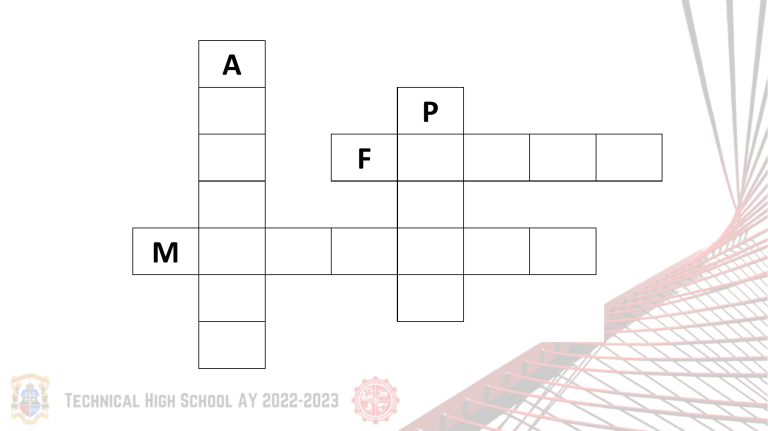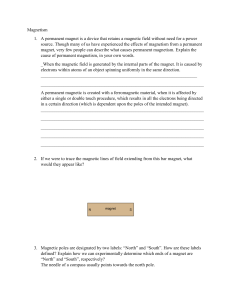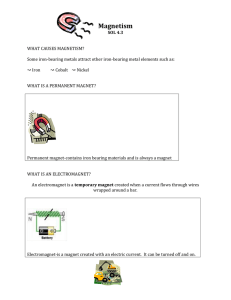
A P F M MAGNETISM HISTORY OF MAGNETISM The ancient Greeks were the first known to have used this mineral, which they called a magnet because of its ability to attract other pieces of the same material and iron. • William Gilbert (1540-1603) • He was the first to investigate the phenomenon of magnetism. MAGNET It is an object that has a strength to attract magnetic materials. This means that a magnet does not attract all materials, it only attracts materials which have a property to get attracted to or interact with a magnet. What are the types of magnet? Natural magnet • • Have no regular shape and size. Weak magnets Artificial magnets • • • They are made of materials like iron, cobalt, and nickel. Strong magnets They can be made in different shapes and sizes. Properties of Magnets It can attract materials that are magnetic in nature. The forces of attraction are produced by the ends of the magnet. Magnetic Poles Magnetic axis – a straight line that acts as a junction between the north and south poles. All strongly magnetic materials contain Iron, Nickel and Cobalt. They are called ferromagnet. Opposite poles are attracted to each other, while the same poles repel each other. What is the difference between permanent and induced magnets? • Permanent magnets never lose their magnetism. • Induced magnets have a temporary magnetic force. WHAT IF WE BREAK A MAGNET IN HALF? Magnetism Is a force, like gravity and the strong and weak forces inside the nucleus of an atom. Magnetic forces pull and push objects by generating the socalled magnetic field. MAGNETIC FIELD A magnetic field is the area around a magnet where it exerts its force. The lines are called magnetic field lines. Magnetic flux is the number of filled lines per area. International System of Units The SI unit of the magnetic field strength (B) is the tesla (T) In honor of the Serbian-American physicist NIKOLA TESLA (1857-1943) One (1) tesla = One (1) newton per ampere-meter International System of Units The SI unit of the magnetic flux (B) is the weber (Wb) In honor of the German physicist WILHELM WEBER (1804-1891). One (1) weber = One (1) tesla square meter QUIZ #1 1. Daniel hangs steel paper clips at different places on a bar magnet. Complete the following sentence: The magnetic force is ______________. A. weakest in the middle B. strongest in the middle C. weakest at the poles 2. Magnets create magnetic fields. We can use iron filings to show the magnetic field around a bar magnet. What does this image show us about the magnetic field? A. It is strongest at the poles. B. It is the same in all areas on the magnet. C. It is weakest at the poles. 3. A simple compass is a magnetic needle mounted on a pivot or a short pin. The needle can spin freely. Which direction does the needle on a compass always point to? A. South B. North C. West D. East 4. It is the straight line that acts as a junction between the north and south poles. A. South poles B. North poles C. Magnetic axis D. Magnetic flux 5. What happens when the south poles of two magnets are brought together? A. Nothing happens. B. They attract each other. C. They repel each other. 6. Isabella is drawing 2 magnets that attract each other. She forgets to color in or label the poles on the 2nd magnet. Which image correctly shows the second magnet? A. B. 7. What is the name of the region around a magnet where the magnetic force acts? A. The compass B. The poles C. The magnetic needle D. The magnetic field 8. A bar magnet has two poles. What do we call them? A. North and west B. East and west C. North and south D. South and east 9. It is a force, like gravity and the strong and weak forces inside the nucleus of an atom. A. Ferromagnet B. Poles C. Magnet D. Magnetism 10. Who was the first to investigate the phenomenon of magnetism. A. Albert Einstein B. Nikola Tesla C. William Gilbert D. Wilhelm Weber “That’s in all things, God may be glorified.”



